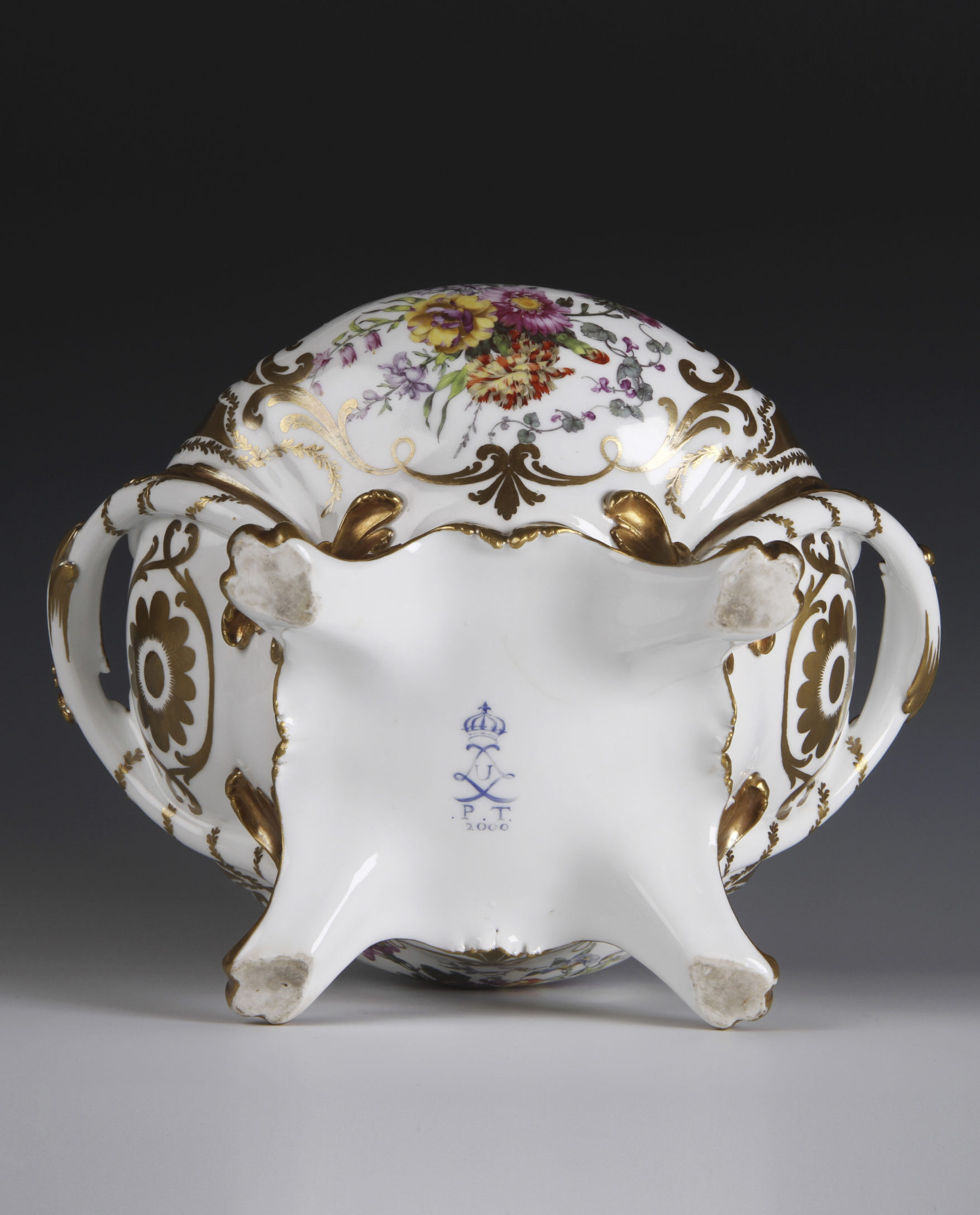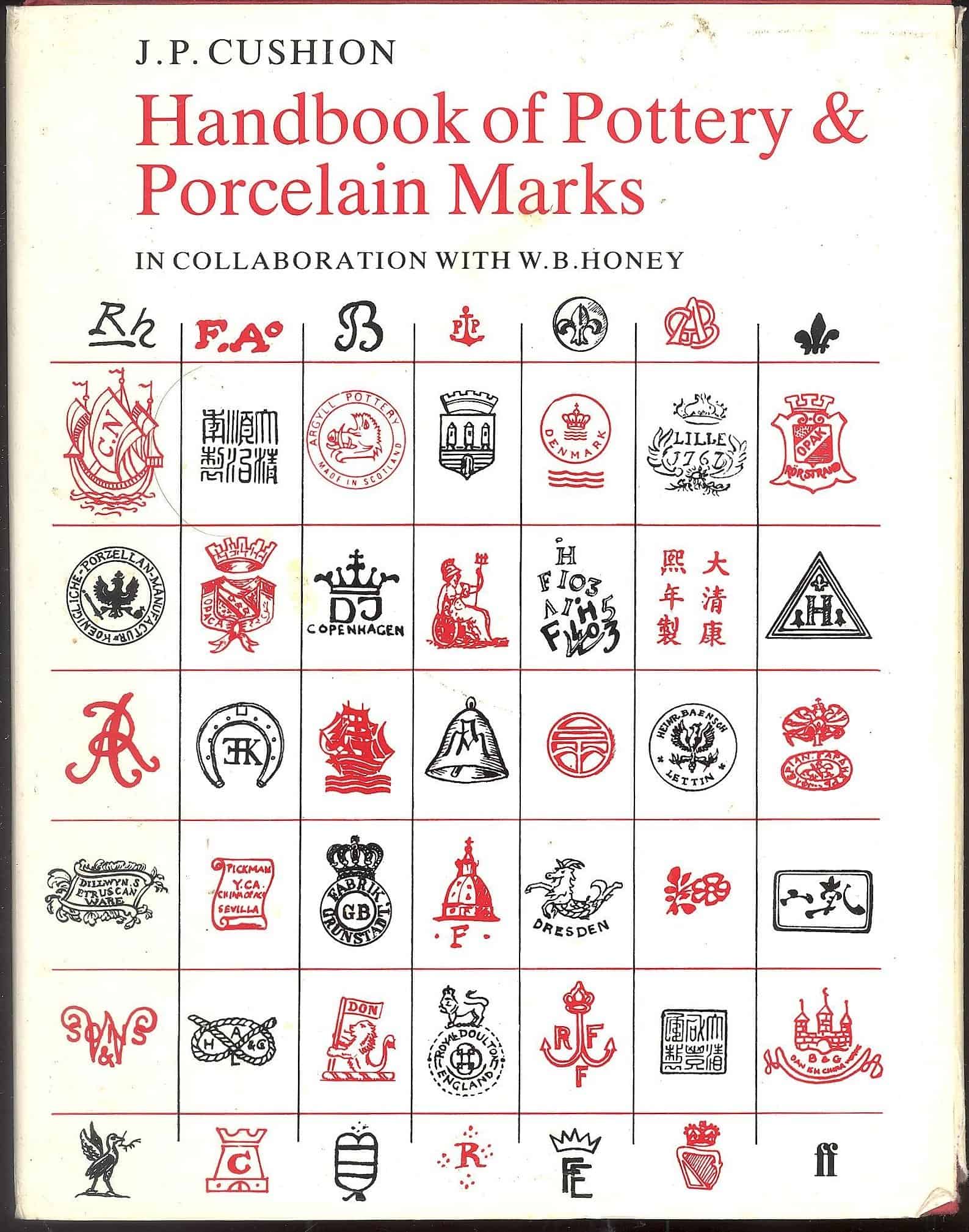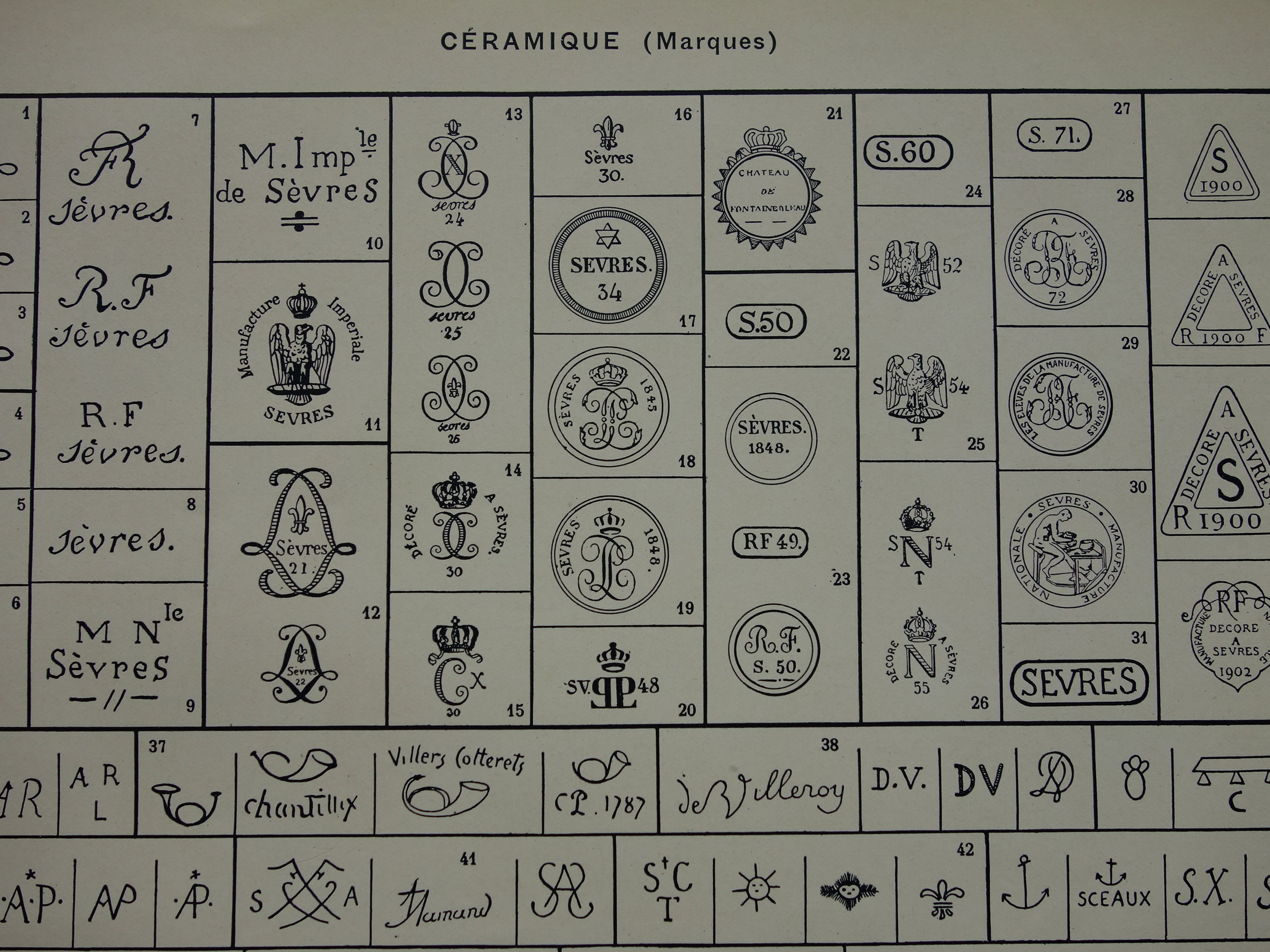Porcelain Marks Antiques Board
Identify & research porcelain marks on Figurines. Includes marks on Hard-Paste, Soft-Paste, and Bone-China. Find the true maker and origin of your antique or vintage Porcelain Figurines and compare with fake marks or copies on recent Asian reproductions.

Marks The French Porcelain Society
Bauer Pottery. J. A. Bauer pottery started production in Los Angeles, California in 1910. Early Bauer production was red clay and stoneware, but later production was dinnerware, table accessories and florist and garden pottery. Bauer expanded to Atlanta in 1945, producing Russel Wright designs for a short time.

Meissen porcelain marks
Porcelain and Pottery Marks Explained Pottery Marks Explained Whether its English pottery marks or German porcelain marks, Japanese vintage backstamps or Chinese seal marks, the abundance of unknown branding logos sometimes can seem like a frighteningly huge subject to tackle.

Vintage Pottery Marks From Italy
How to Identify Pottery and Porcelain Marks Identify Your Antique Pottery and Porcelain Marks With This Easy Guide. By Pamela Wiggins Updated on 05/06/20 Michelle Dwyer / Getty Images Identifying a mark on a piece of pottery or porcelain is often the first step in researching the value of these antique and collectible pieces.

Antique Pottery Makers' Marks Porcelain & Pottery marks Antique porcelain, pottery books
A Step by Step Guide on How to Identify Antique German Porcelain Marks. Step 1: Locate the Manufacturer's Mark. Step 2: Note the Glaze's Texture. Step 3: Note the Glaze's Color. Step 4: Note the Shape of Your Porcelain Piece. Step 5: Use Your Observations for Research. The Most Common Antique German Porcelain Marks. 1.

Hi! Does Anyone Know These Marks On A Porcelain Figurine? Thanks Artifact Collectors
The Marks on Pottery and Porcelain are of three kinds—factory, workman, and pattern mark. Thefirst is usually placed in a prominent position, sometimes accompanied by the mark of the maker or decorator. Sévres Porcelain, for instance, often having four or five workmen's marks, besides that of the factory. The

Antique Pottery Marks (Types & Identification Guides)
If the piece of pottery or porcelain you have has a mark on it, you can identify it in several ways. Slavid recommends that you head to the library and look for books on the mark. "But you do need to know the country of origin," he says. "A book on English china marks won't help you find anything about a German pottery mark."
German porcelain ballerina. Marks ID? Antiques Board
A Meissen group of Columbine and Scaramouche 'Die Hahnreigruppe', circa 1741-45. Sold for £92,500 on 3 June 2015 at Christie's in London. In the 18th century, porcelain — known at the time as 'white gold' — was one of the most highly prized commodities in the world. Trade in porcelain wares from the East was booming, but the.

Porcelain Figurine Marks Two day Sale of Antiques, Fine Art, Ceramics,Glassware and Various
Most pottery marks are identified by using a reference book. There are several different books available, but the two most popular are "The Official Guide to Pottery and Porcelain Marks" by The Collectors Club of New York and "The Ceramic Marks Dictionary" by Liz Hayward. These books can be found at most large libraries or purchased online.

Making Sense of Capodimonte Porcelain Marks Pottery marks, Antique porcelain, Porcelain
Mar 18, 2015 - Explore Sandi Logan's board "Collection of porcelain & pottery makers marks", followed by 482 people on Pinterest. See more ideas about pottery makers, pottery marks, pottery.

Antique Porcelain Marks Identification
Most porcelain marks on fine antique china, such as the Meissen marks, are "underglaze"--meaning, they were applied to the piece prior to firing. For the first hundred years or so of porcelain production there were only two known pigments that could withstand the high firing temperature necessary: iron red and cobalt blue.

Antique Porcelain Figurines Marks
Paquier's early wares were unmarked, but when the Royal family took over, they began marking the porcelain with the shield mark, now known as the aforementioned beehive mark. The Imperial and Royal Porcelain Manufactory of Vienna became the most important porcelain manufacturer in the area and continued to make fine hand-decorated porcelain.

Lladro Trademarks, Makers, and Factory Marks History
STEP #1 Check to see if your pottery or porcelain marks identification query has already been answered on this site. Use the convenient search box just below here (A typical search phrase might be something like ' k and crown'. Try several variations of the keywords in a different order - the first one doesn't always get it. Site Search:-

11 best Pottery Marks German Porcelain. images on Pinterest Pottery marks, Makers mark and
Porcelain vases can be correctly identified using backstamps or marks located usually at the bottom of each piece. Learn how to research makers marks on Porcelain or Pottery Vases & Figurines to determine their maker and country of origin. Includes important details on each company to help you also determine the period they were made.
Porcelain Figurine Mark Antiques Board
Miscellaneous Pottery Porcelain Marks: Including various marks from a range of British, American, and European pottery and porcelain manufacturers. Adams Ironstone c1962 Bishop & Stonier Bisto Mark Capodimonte Crowned N Capodimonte N artist T Galli Choisy le Roi French c1930 Crown Devon c1917 to c1930 Crown Devon c1930 on Ernst Wahliss Vienna Mark

Meissen porcelain marks
The majority of marks date after 1850. Some are current marks. (It may be disappointing, but it is important to know you do not own an antique). Most of the marks listed are from the United States, England, Germany, and France.